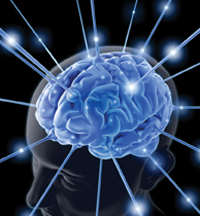Methadone Maintenance and the Brain: How it Works
Methadone and the Brain
According to the National Institute on Drug Abuse, methadone is long-acting and a synthetic opiate drug that works at the same receptors in the brain as other opiates, such as heroin. However, it has a slow onset and long duration of action when it is taken orally as directed. Properly dosed, methadone is not intoxicating or sedating and it does not interfere with ordinary daily activities, such as driving a car.
Methadone is an opiate, and it does have the same effects as other opiates do on a person’s brain, but when it is administered to a person by a methadone maintenance treatment program, the person will not feel the euphoric rush or sedation they feel when they are abusing other opiates. Methadone releases slowly in a person’s body, which means that the effects of the drug will last all day.
Since methadone acts on the same receptors in a person’s brain as other opiates, methadone will effectively suppress the symptoms of opiate withdrawal and it will relieve the unbearable drug cravings that commonly cause people to relapse. This is why methadone maintenance treatment is the most effective treatment for opiate addiction.
How Methadone Maintenance Treatment Helps

Methadone works on the same receptors as other opiates but it does not produce a significant high effect.
According to the Center for Disease Control and Prevention, methadone maintenance treatment is the most effective form of treatment for opiate addiction. Methadone works by blocking the sedating and euphoric effects of opiates, by relieving the cravings for opiate, and by relieving the withdrawal symptoms of opiate detox.
Methadone maintenance treatment programs are not only about the administration of methadone, but they also want to help a person learn to manage their addiction and to do this, therapy is needed. Opiate addiction is a chronic brain disease, which means that even though methadone is suppressing the physical withdrawal symptoms, a person will still have to get treatment for their psychological withdrawal symptoms.
Methadone maintenance treatment will help a person receive both the physical and mental help they need to learn to manage their addiction and regain control of their life. Before going to a methadone maintenance treatment program, a person should research their different options of programs and try to find a program that meets their individualized needs and preferences. The more comfortable a person is with their treatment program, the more success they will have, and the more likely they are to open up in therapy and with other people.
A person may also want to consider joining a support group, such as Narcotics Anonymous once they leave a treatment program. Going to a support group and being around other people who struggle with the same problems will help a person to feel understood and may provide them with extra strength they need.